Alone In The Dark Review
Alone In The Dark
Can Alone in the Dark win back the survival horror crown from Resident Evil?
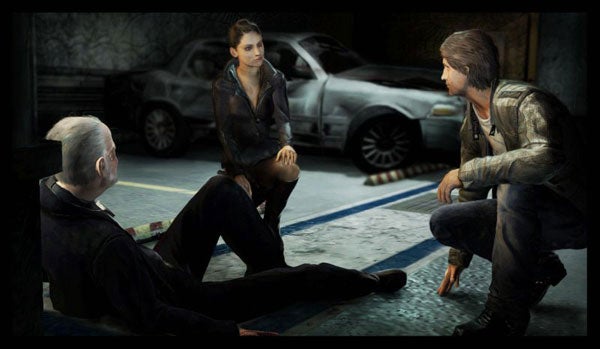
Verdict
Key Specifications
- Review Price: £34.73
”’Platforms: Xbox 360, PS3, PC, PS2 & Wii – Xbox 360 version reviewed.”’
I owe the original Alone in the Dark a considerable debt: it was one of three games that persuaded me to buy a PC in the first place, so leading pretty much to the way I’m gainfully employed today. It’s also one of my most fondly remembered games of all time. It’s slightly garish, flatly-lit polygonal graphics look oh so quaint today, but back in 1992 it was a hugely creepy and atmospheric experience – every bit as frightening as a Resident Evil 4 or Silent Hill 2, and equally as immersive as a Bioshock or Oblivion. From the 3D visuals to the use of sound and the cinematic way it was all put together, this was horror gaming of the most cutting-edge variety.
And I can see that this 2008 re-visioning has been made with the same sort of ambition. This isn’t a slightly lazy move into Resident Evil territory, as was Darkworks’ 2001 The New Nightmare, but a bid to use the HD graphics and real-world physics of a new generation of consoles to give us survival horror on a blockbuster scale. It’s a game that begins with the destruction of a New York apartment block, goes on to tear up the streets of Manhattan and then delivers a convincing depiction of a Central Park that has – almost literally – gone to hell. Watched on a big screen TV it can be impressive, spectacular stuff. The graphics engine pulls off detailed interiors and suitably gloomy, exterior areas. The human (and inhuman) characters are convincing, if not quite Mass Effect quality when seen close up, and the moody, shock-noir lighting is top notch. It’s cut together like a movie, mixing the off-kilter camera angles we’ve become familiar with in years of Resident Evil, with tracking shots, sudden zooms and pull-outs and some expert handling of suspense.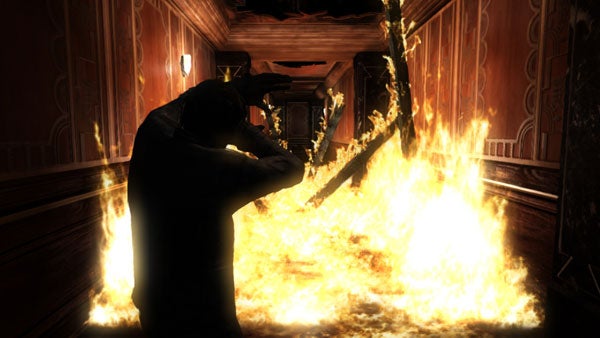
Meanwhile, the way in which real-world physics has become part and parcel of nearly every aspect of the game shows a real willingness to push the boundaries. Eden always promised that the days of door and key puzzles were over for Alone in the Dark, and the team has come good. If a door looks like it can be busted down with a fire extinguisher or sledgehammer, then it can be. If you expect an obstacle to be blown out of the way by an explosion or catch fire when a flame is brought to it, then it will do. At times puzzles have multiple solutions, some requiring the intelligent manipulation of the environment, some demanding acute observation, and some needing little more than the repetitive application of brute force. Even combat is affected. It’s not just a case of picking up a baseball bat and pressing A to whack – you have to use the right analogue stick to swing it left and right and up and down.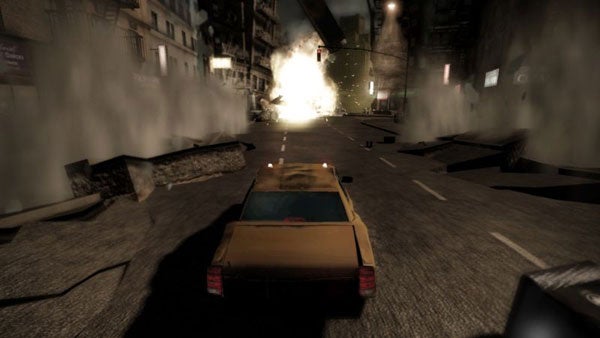
I also admire the game’s distinct MacGyver tendencies. Combine handkerchiefs with bottles of meths and you get nice Molotov cocktails. Use the meths with the gun and, hey presto, burning bullets. Use the lighter and a spray can and you have a close-quarters DIY flame-thrower. You can even throw potentially explosive items in the air and hit them from a distance with your handgun. All cool stuff.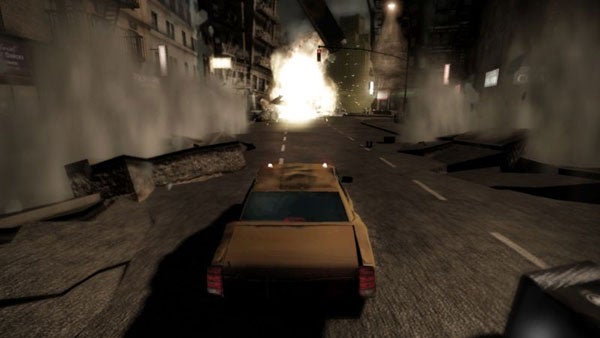
What’s more, Eden has had a brilliant idea that has a huge impact on both the way the game plays and its atmosphere. Alone in the Dark is set up like an American serial TV series, a la Lost, Heroes or 24. It’s divided into episodes, and those episodes are divided into sections, with each section acting as a checkpoint. This means that, for one thing, you can stop playing for the night then kick in the next evening and you’ll get a great ‘Previously on Alone in the Dark’ sequence that gives you a recap on events so far and takes you straight back into the action. More importantly, the DVD-style interface allows you to skip a sequence should you get horrifically stuck. It’s a clever way of ensuring that even the less skilled gamer should be able to see the end of the game, and while I think there are some repercussions, it’s still an idea that I’d be happy to see other games copy.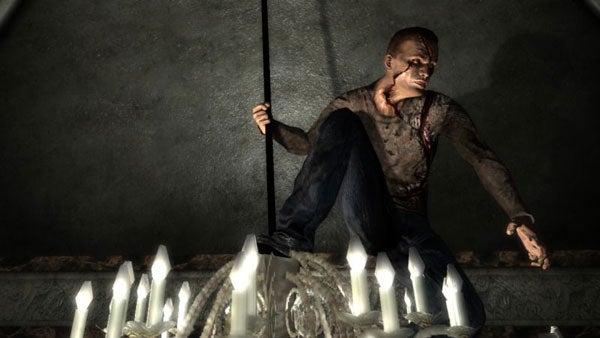
Finally, it’s good to see that Eden has gone the tonne and the direction of the story right. The plot flows well from episode to episode, with some excellent Lost-style reveals, a few good shocks and some brilliant daredevil moments. An unexpected link to the original game is well handled, and the smallish cast, the dialogue and drama work generally quite well. In an awful lot of ways, this is a new Alone in the Dark that does the first game justice. It could even have been the new gold standard for survival horror games – or at least until the new Resident Evil, Silent Hill and Project Zero titles show up.
Unfortunately, it isn’t, and it all comes down to the way Alone in the Dark actually plays. It’s as if Eden put all the work into the big picture – the world, the physics, the visuals – and forgot the smaller picture of how it would feel for the player to interact with its creation. Even with the option to switch at will between first-person and third-person views, Alone in the Dark feels slow, unresponsive and kludgy. On foot, your hero seems to take ages to move or change direction, and it’s not helped by abrupt changes of camera angle in the third-person view. Lord help you when you’re trying to escape some eldritch foe or evade some perilous situation. Half the time you haven’t got a hope. 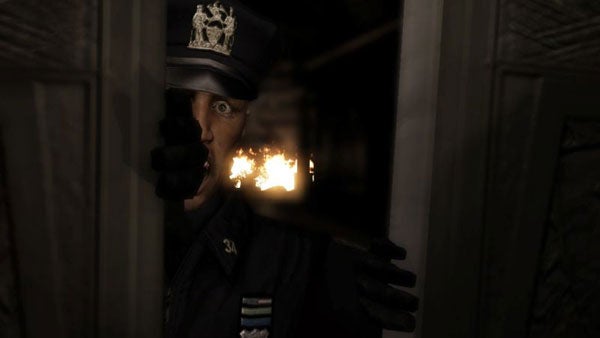
Melee combat is a nightmare. Attacked by demonic New Yorkers, your chances of fending them off with a chair or length of pipe are diminished by the fact that you can never quite predict how your movements of the right analogue stick will translate into swinging or chopping movements on the screen – even with a left-trigger lock-on, you’ll be wishing for a return to the good old days when one button equalled one attack. Targeting with ranged weapons isn’t an awful lot faster, and even tossed explosives have a tendency to bounce in unpredictable ways. When your opponents are as numerous, tough or fast moving as they can be here, the result is a lot of frustration. Things get slightly easier when you realise that flame is the key to the quick dispatch of hostile fiends, but combat in Alone in the Dark is a tense affair for all the wrong reasons.
Things get worse in the driving sections dotted through the game. Vehicles are hard to control, those dramatic changes in camera angle become even more irritating, and one long, if spectacular sequence desperately calls for at least one mid-section checkpoint. There are chunks of game you’ll repeat over and over and over again, until it gets all too tempting to reach for that ‘skip’ button. And whoever decided that context-sensitive stick movements were the best way to handle actions like hotwiring a car, giving CPR or repairing a blown circuit board needs a good talking to. Everywhere you look, from puzzle-solving to inventory management – where you laboriously cycle left and right through the items stowed in your jackets while the action carries on around you – you feel like you’re getting a hard time because somebody decided that things should be done in a new way, and not necessarily the best way.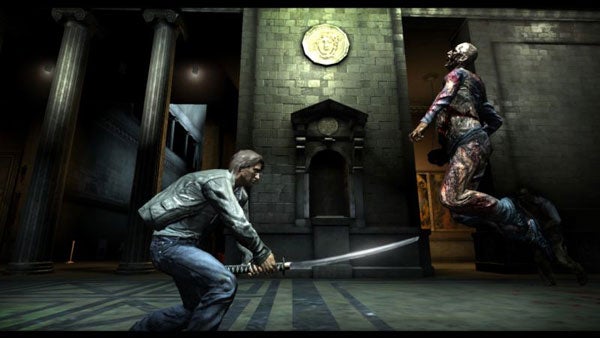
And this is a terrible shame, because the more I played Alone in the Dark, the more I stopped enjoying the experience. I stopped feeling tense or nervous about that was happening to the characters in the game, because I was too busy feeling fed-up or stymied by the way I had to control them. To be truly immersive, a game has to make the way you interact with it transparent, or at least second nature. Alone in the Dark keeps it constantly at the forefront of your mind, spoiling your enjoyment in the way that an irritating punter in the next seat can spoil a good movie.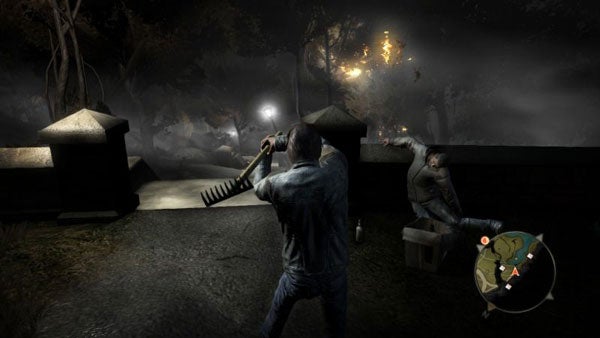
Hence the low score. If Alone in the Dark had been more enjoyable hands-on, I’d be whacking an eight or nine at the top of this review, but I’ve found it so consistently frustrating to play that I can’t even reach for a seven. Is it a good thing that I can skip through a section of game and get to the next bit? As long as I don’t miss out on the story, it probably is. Is it a good thing that I constantly wanted to? Nope, and that’s Alone in the Dark’s problem in a nutshell.
”’Verdict”’
A strong, potentially cutting edge horror game wrecked by car-crash controls and some hugely irritating design decisions. Only worth a go if you have an awful lot of patience.

